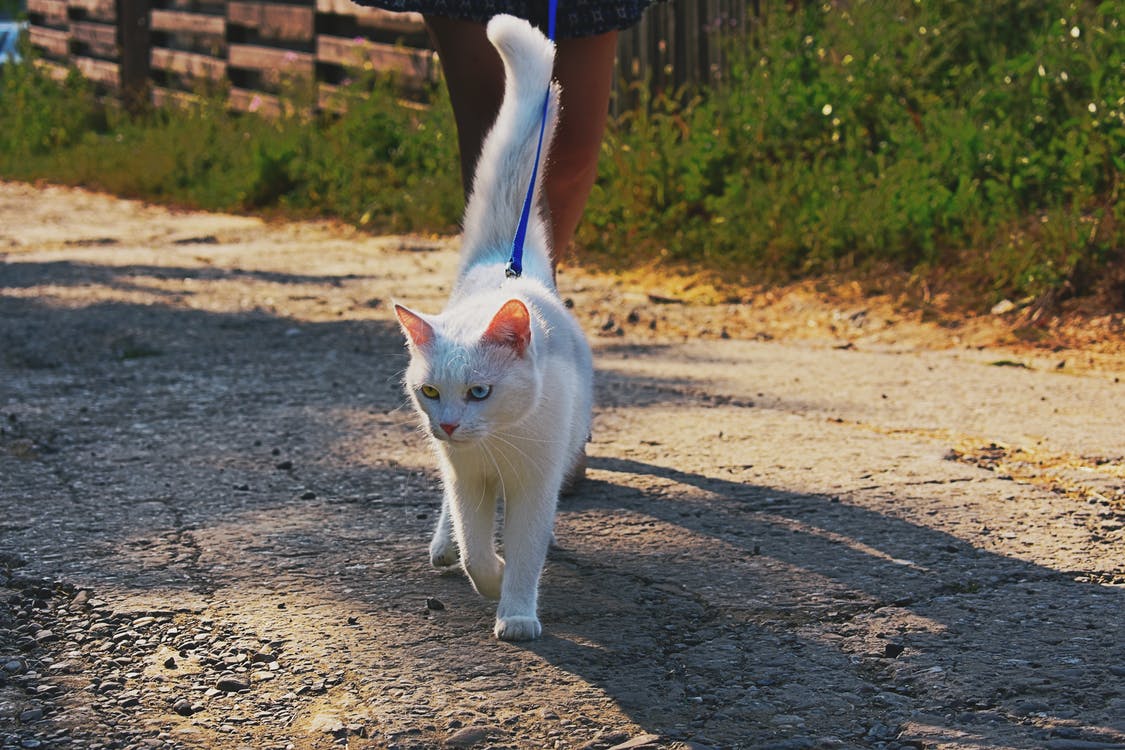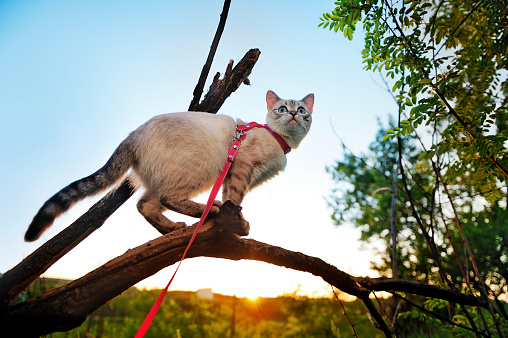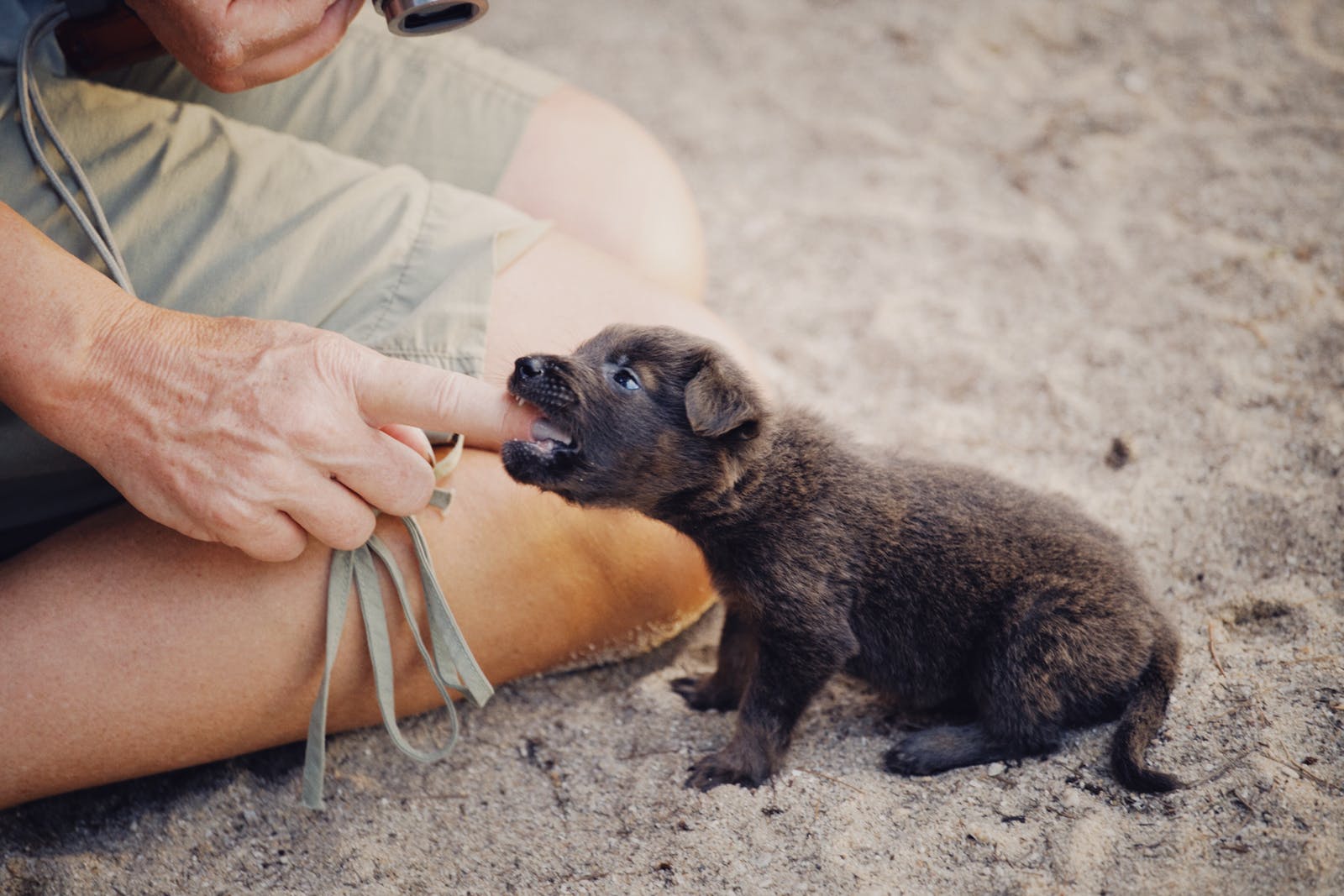
Cat leash walking is likely to be met with ridicule and astonishment by many people. It may seem quite unnatural for cats to walk on a leash and any attempts to train your cat to do it are not likely to bring results, are they? We find “cat leash training” a controversial and thus an interesting topic that we would like to discuss in today’s article.
Why Leash Train Your Cat
Leash training your cat has benefits for both of you. Cats are very curious creatures, considered even more curious than dogs. This trait could put them in many troubles if they go outside unsupervised. When trained to walk on a leash, your kitty will be able to explore the outdoor world under your supervision and stay safe. However, satisfying their desire to explore is not the only reason for cat leash training.
Walking outside will benefit your cat’s physical and mental health. This is especially valid for adult cats as different health conditions may occur with the process of aging. If your kitty is spayed/neutered, it is extremely important that you take care of his/her physical health and prevent them from gaining much weight. You should feed him/her with food specially designed for spayed/neutered cats, that is lower in fat, and exercise your paw friend regularly, so that he/she stays in shape.
Leash training will make the bond with your cat stronger. You will spend more time with your paw friend both during the training process and outside while on a walk. Your kitty is likely to start trusting you more and develop an even stronger attachment to you.
What You Should Consider Prior to Training
You should start training your cat while he/she is still young. The younger a cat is, the easier he/she learns to navigate the surrounding and explore it without being afraid of people or any objects in it. However, this does not mean automatically, that you will be unable to train an adult cat. You just may need more time.
You should be patient and consistent. If you decide to engage in leash training your cat, you should be prepared to show your best training skills and virtues. Patience and consistency should become part of your training routine and you should never lose control if things do not happen as quickly as you wish.
If you imagine that leash walking a cat will look the same way as leash walking a dog, you may want to think again. You should not force your cat to go the direction you have chosen. The best thing you can do while outside with your kitty is to let him/her investigate the surroundings or just sit and watch the moving objects. Of course, you should be prepared to intervene if potentially dangerous situations are likely to occur.
Not all cats feel comfortable with leash walking. Some kitties do not feel comfortable outside, especially if they have spent a big part of their lives in an apartment. Unfamiliar environment with various sounds, objects and smells may be stressful for your kitty. Whether a cat will enjoy spending time outside, depends on his/her personality, and habits. Also, some cats can not stand being put a leash and a harness on, and it may take a lot of time for your paw friend to get used to them.

How to Conduct Leash Training
You may already know, that the main idea of each training process is to develop a positive attitude in your pet towards it by using positive reinforcement. Leash training is not an exception and your main goal during the training process should be pairing the leash and the harness with positive stimuli.
Introduce the Harness
The first step of the training process is the proper introduction of the harness. You can put the harness next to your cat’s food, favorite toys or on a spot in your home that he/she likes. You should encourage any interest in your cat towards the harness and reward him/her when he/she starts sniffing it. If your kitty does not seem to want to go to the harness, you can pick it up and hold it in your hand, until your cat comes to you on his/her own. When your paw friend notices that you are holding a new item, that he/she is unfamiliar with, he/she is likely to come to you to check what it is all about. When he/she comes and starts sniffing it, give him/her treats immediately.
Some cats get anxious when they hear new sounds, and you may need to spend several days clipping and unclipping the harness, so that your feline friend can get used to the sound.
Put the Harness On Your Cat Without Attaching a Leash to It
Once your cat gets acquainted with the harness, you can try putting it on. You should make small steps and at the beginning you may need to let it on your kitty for a minute maximum. At the moment you put the harness on your paw friend, you should give him/her treats immediately. After a minute you should put it off. Reward your feline friend only when the harness is on.
If your kitty is still a bit skeptical towards the harness, you can try to put it on right before feeding time. Your paw friend is likely to be focused on the food and not pay so much attention to the harness. You should repeat this step several times so that your paw friend gets used to the feeling of wearing a harness. It is important, that you do not attach the leash to the harness at this point of the training process. Also, you should not fasten the harness during the first several repetitions.
Fasten the Harness
Once your kitty starts feeling comfortable with the harness on, you can try to fasten it. Remember that you should be able to fit 1-2 fingers between the harness and your kitty’s body. It should be neither too tight, nor too loose. Leave the harness for 1-2 minutes on your kitty and provide him/her with a reward, then remove it. The next day you can try leaving it on your paw friend for 2-3 minutes, and later for 4-5 minutes. Increase the duration gradually and always reward your cat while having the harness on. Also, you can do things that your cat likes while he/she is wearing a harness- you can talk to him/her gently, pet him/her, hug him/her...everything that will encourage your kitty and make him/her feel rewarded for wearing a harness. Remember that it may take a few weeks until your feline friend accepts the harness and be able to remain calm while wearing it.

Attach the Leash to the Harness and Practice Indoor Walking
As a next step you should try including the leash in the training process. We would recommend one of the two listed below methodologies to implement the leash in the training process.
1. You can attach the leash to the harness and let it being dragged by your kitty while walking;
2. You can attach the leash to the harness and hold it loose.
The first approach could make your kitty feel uncomfortable and stressed from the moving object behind him/her, so if this is the case, you should try to second one. Remember to give your cat plenty of treats during the process. Let your kitty walk for several minutes with a leash on, and then put the training gear off. At this point of the training process your paw friend should adapt to the feeling of wearing both a harness and a leash when walking indoors.
Gently Walk Your Kitty Indoors
As a next step you should keep the leash in your hand and try to apply slight pressure. Let your cat make a few steps in the direction that he/she wants, then try to switch the direction. You can do this by using several approaches, based on what previous training your cat has.
1. Place your kitty’s favorite treats on the floor and use your finger to point them. That way you are likely to determine your cat’s direction;
2. Call your cat by name. When he/she comes to you (and change his/her direction), give him/her a reward (his/her favorite treats). The ability of your cat to recognize his/her name and respond to it could be very beneficial in various situations;
3. You can use a clicker to mark the wanted behavior when our kitty performs it and reward him/her immediately. When your cat comes to you and fulfills a command, click or use any distinctive sound to mark the behavior and give him/her a reward.
Gently Walk Your Kitty Outside
After several repetitions indoor you can try practicing leash training outdoors. Remember that you should walk your kitty near your home, close to the front door. Since the new experience may be overwhelming for your paw friend, he/she may need to know that the safe zone (home) is only one foot away. It is recommended that you start practicing leash training in a quiet area near your home like your backyard, then move to a park in the neighborhood at a time of the day when it is not crowded. Also, you should choose an area where are no dogs.
It is important to expect different types of behavior- your cat may really enjoy the experience or may get frightened of a random object or sound outside. Hence, you may need to carry your kitty’s favorite toys or a warm blanket to wrap him/her in, if abrupt return home is needed. As we mentioned above, walking a cat is not the same as walking a dog. Although your intervention may be required in certain situation, in general you just need to let your kitty enjoy the process of exploring. Remember to stay outside for just a few minutes. If your cat is doing pretty well, you can start increasing the duration gradually.
What You Should Consider When Outside With Your Cat
You should always supervise your little friend. Cats are very agile and can move from one point to another really quickly. You should be extremely careful when accompanied by your kitty in new surroundings. Do not expose your cat to an environment with too many distractions.
Do not go too far. Choose a certain area next to your home and keep the walks within it. If you do not have a backyard, go to a quiet area (with no dogs).
Do not force your cat to go to a certain direction unless it is necessary for his/her own safety.
Do not put too much pressure on the leash, but make sure that you can react quickly as needed.
Do not go for a walk if your cat starts meowing, whining or behaving disruptively. That way he/she will learn that you will take him/her out every time he/she wants. Rewarding a bad behavior will only encourage your feline friend to keep performing it.
Do not let your cat go outside whenever he/she wants. If your cat learns that he/she is allowed to go outside anytime she wants with a leash on, it is very likely that he/she tries to do it without a leash as well.













